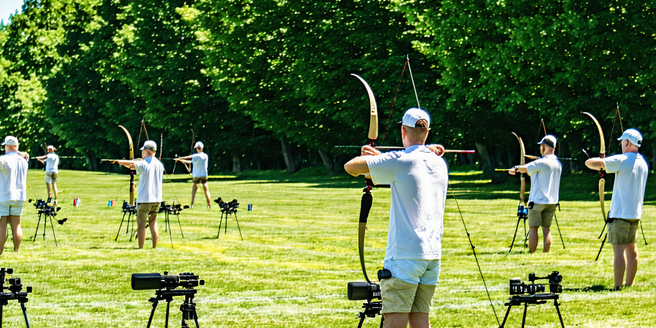
Understanding the Basics of Archery and Weather
Archery is a precision sport that relies heavily on the archer’s skill and the consistency of their equipment. However, weather can significantly influence performance. Understanding how various weather conditions impact archery is crucial for any archer aiming to hone their skills. Wind, temperature, humidity, and rain all introduce unique challenges that can affect arrow trajectory, bowstring performance, and even the archer’s mental focus. Conditions such as wind can cause arrows to deviate from their path, while humidity can alter the tension in bowstrings. Temperature fluctuations might affect the equipment’s resilience, and rain can pose grip challenges. Archers must be aware of these potential impacts to adjust their techniques accordingly, ensuring consistent performance irrespective of the environmental conditions they face.
Wind Influence: Aiming and Arrow Trajectory
Wind is one of the most challenging weather conditions for archers to contend with. It can cause significant deviations in the path of an arrow. The direction and speed of the wind can alter the arrow’s trajectory, making it difficult to hit the intended target. Archers must learn to read the wind by observing environmental indicators like flag movement or grass swaying. Correcting aim in response to wind conditions is essential. By aiming slightly off-target, archers can compensate for wind drift and maintain accuracy. Understanding how different types of wind affect arrow flight is vital; crosswinds and headwinds require different adjustments. Practicing in varying wind conditions can help archers develop the intuition to make quick decisions, ensuring that they can adapt their aim under any circumstance.
Temperature Effects on Equipment and Accuracy
Temperature variations can have a notable impact on archery equipment and accuracy. High temperatures might cause materials like wood and carbon in bows and arrows to expand, potentially altering their performance. Conversely, cold weather can make materials more brittle and less responsive. The elasticity of bowstrings can vary with temperature, affecting the force with which arrows are propelled. Archers need to be aware of these potential changes and adjust their equipment settings accordingly. Consistent practice in different temperatures is essential to understand how the equipment reacts and to maintain accuracy. Moreover, extreme temperatures can affect the archer’s physical performance and concentration, highlighting the importance of acclimatizing to conditions before competitions. By testing equipment in varied temperatures, archers can adapt to ensure peak performance.
Humidity: Bowstring Performance and Grip Issues
Humidity levels can have a significant impact on archery performance, affecting materials and the archer’s grip. High humidity can cause bowstrings to absorb moisture, leading to increased weight and altered tension, which, in turn, affects arrow speed and trajectory consistency. Archers need to regularly check and adjust their bowstrings, ensuring optimal performance regardless of environmental changes. Additionally, humidity can cause gripping issues. Moisture on the hands can affect how securely an archer holds the bow, impacting accuracy and increasing the likelihood of slippage. To combat these effects, archers can use grip aids designed to maintain friction and stability. Practicing in a variety of humidity levels will help archers develop techniques to maintain control and deliver precision shots, adapting swiftly to any shifts in humidity.
Rain and Moisture: Challenges for Archers
Rain presents a unique set of challenges for archers, primarily due to the moisture it introduces to both equipment and the shooting environment. Water can swell wooden equipment and weaken adhesives, disrupting the balance and performance of bows. To protect against rain, archers can use waterproof treatments and carry protective gear. Additionally, moisture can accumulate on the arrow shaft, increasing drag and altering trajectory. Practicing under wet conditions allows archers to understand these impacts and adapt their shooting techniques to maintain accuracy. Rain can also test an archer’s grip, as wet conditions reduce hand friction on the bow handle. To prevent slipping, archers may use towels or anti-slip wraps. Developing strategies for wet conditions is essential for overcoming moisture-related challenges, ensuring consistent performance.
Strategies to Adapt to Varying Weather Conditions
Successful archery requires the ability to adapt strategies to cope with different weather conditions. Preparation is key. Archers should regularly practice in diverse weather situations to build resilience and familiarity with their equipment’s performance. Developing a personalized kit that includes weather-specific gear, such as rain covers and insulating layers, can enhance comfort and focus. Mental preparation is equally important; archers can use visualization techniques and focus exercises to maintain calm and concentration regardless of external conditions. Analyzing past performances in varied conditions also provides insights, allowing archers to fine-tune their strategies. Mentoring with experienced archers who have faced similar challenges can offer valuable perspectives and solutions. By anticipating weather changes and preparing both physically and mentally, archers can ensure that their performance remains consistent and exceptional, regardless of the weather.
